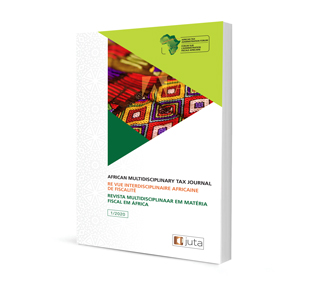
Assessment of the impact of electronic fiscal devices on compliance and VAT collection in Malawi
Authors: James Manuel Kenani (jkenani@mra.mw), Michael Masiya (mmasiya@ataftax.org), Mercy Samantha Njolomole (mnjolomole@mra.mw)
ISSN: 2709-8575
Affiliations: Manager-Tax Policy Analysis & Strategy, Policy Planning & Research Division, Malawi Revenue Authority; Researcher, Research Division, African Tax Administration Forum (ATAF); Manager-Research & Statistics, Policy Planning & Research Division, Malawi Revenue Authority
Source: African Multidisciplinary Tax Journal, 2021 Issue 1, p. 1-21
https://doi.org/10.47348/AMTJ/2021/i1a1
Abstract
The study examined the effectiveness of using electronic fiscal devices (EFDs) in revenue collection and compliance. The study used a quantitative approach for the analysis. Timely filing of tax returns was used as a measure of compliance whereas value-added tax (VAT) revenue collection as a percentage of gross domestic product (GDP) was employed as a measure of revenue collection performance. The data used for the analysis covered July 2005 to June 2019. A sample of 318 taxpayers was used for the analysis of the level of compliance and revenue collection. The sample included a segment of 244 taxpayers using EFDs and 74 taxpayers without EFDs all being small and medium taxpayers. The results indicated that using VAT collection has not increased revenue collection in the period under review as evidenced by a decline after the EFDs were rolled out. The study also found that the mean of growth of VAT revenues in the two periods (pre- and post-EFD implementation) does not reveal any significant difference. We found that taxpayers may be inflating purchases to reduce their tax liability and increase their VAT claims as evidenced by the significance of the change in purchases in pre- and post-EFD periods ‒ the same was evident in sales fluctuations. We further found that the sales-purchases gap is not different between the two periods. In the case of the compliance rate, the findings revealed that EFDs have not been effective in increasing compliance, as shown by a decrease in timely filing of tax returns in the post-EFD era. The study, therefore, concludes that the deployment of EFDs has not resulted in increased VAT collection and compliance during the study period. The study, therefore, recommends that the Authority should consider a system that should pair sales and purchases. Further, the Authority should endeavour to understand the reasons why more taxpayers do not submit returns on time despite having EFDs.